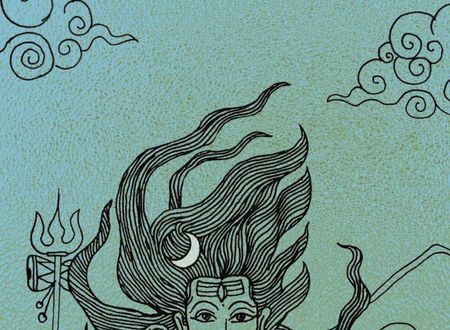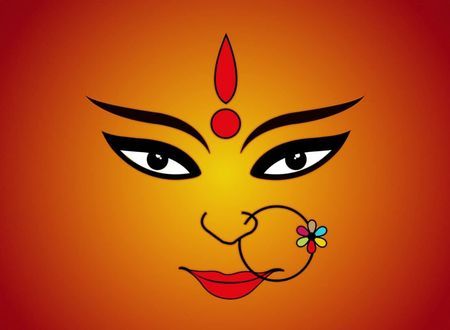“ॐ असतो मा सद्गमय ।
तमसो मा ज्योतिर्गमय ।
मृत्योर्मा अमृतं गमय ।
ॐ शान्तिः शान्तिः शान्तिः ॥
Om asato mã sadgamaya
tamasomā jyotir gamaya
mrityormāamritam gamaya
Om Shanti shanti shantiḥ
Om, Lead me from the unreal to the real,
Lead me from darkness to light,
Lead me from death to
immortality.
May peace be, may peace be, may peace be.
Line 1. “asato ma sadgamaya”
The word “sat” means truth, reality and pure existence. On the other hand “asat” just means the opposite untruth, unreality and non-existence. Therefore seeking the ultimate truth in life. Man has come to understand the limitations of the present life that he is leading. He now realizes that all his “possessions” wealth, health, food, housing, means of transportation, success and fame etc. – are all transitory in nature. They come and go. They are not a source of permanent happiness or joy. Anything that can be considered true or real must exist in all three stages of time – past, present and the future. Everything in this ephemeral universe is constantly undergoing change. Our human bodies go through constant change. Our mind and intellect are constantly changing. Thus, none of these can be labeled as a source of eternal joy. seeking the ultimate truth and reality in life which never undergoes any change.
Line 2. “tamaso ma jyotirgamaya”
The word “tamas” means darkness and “jyoti” means light. In all the ancient scriptures, the Vedas and the Upanishads etc., tamas refers to the darkness of ignorance and jyoti refers to the light of wisdom or true knowledge.The Sanskrit word for ignorance is “avidya”. In the yoga sutras, Patanjali states that avidya is the root cause of all suffering. He defines ignorance as, “Ignorance is regarding the impermanent as permanent, the impure as pure, the painful as pleasant, and the non-self as Self.” (sutra 2.5). This definition seems to echo the state of our mind most of the time when we are in a state of confusion.The only remedy for darkness is light. In the Vedanta tradition, the most commonly quoted example is the “snake in a rope”. A man is walking in the street late in the evening when the light is very dim. He sees something lying curled up on the ground and runs away fearing that it is a snake. A passerby who has a flashlight is able to throw light on the object and show to this man that it was only a piece of rope there. In the darkness of ignorance the man suffered the emotions of fear and anxiety. Our life, for the most part, is built around similar instances of ignorance where we take unreal for real and go through suffering.Through the process of mental purification we can begin to remove the ignorance and get the light of true wisdom and understanding. This process will ultimately lead to self- realization.
Line 3. “mrityorma amritam gamaya” The word “mrityu” means dealth and “amritam” means immortality. Since we do not know our true nature as being pure consciousness, we identify ourselves with this mind, body, ego complex. This puts us in this interminable cycle of birth, death and rebirth. The Sanskrit term for this cycle is “samsara”. The term immortality here means that we want to get out of this cycle of “samsara” by attaining self- realization. We recognize that our true identity is nothing but pure consciousness which undergoes no change. Thus we can terminate this cycle of birth, death and rebirth. In the cycle of birth, death and rebirth. In the yoga philosophy we understand that it is just the physical body which disintegrates back into the five elements at the time of death. It is the soul (atman) which is tied up with the subtle body (mind, intellect etc.) that undergoes this cycle of samsara. Once the soul recognizes its true nature, it is no more tied up with the mind, body, ego complex and is thus free forever. Therefore seeking an understanding of the true nature Self so that there is no more a fear of death.
This is a shanti mantra from the Brihadaranyaka Upanishad. It is also known as the Pavamana mantra. “
Source: shlokam.org









Comments & Discussion
2 COMMENTS
Please login to read members' comments and participate in the discussion.